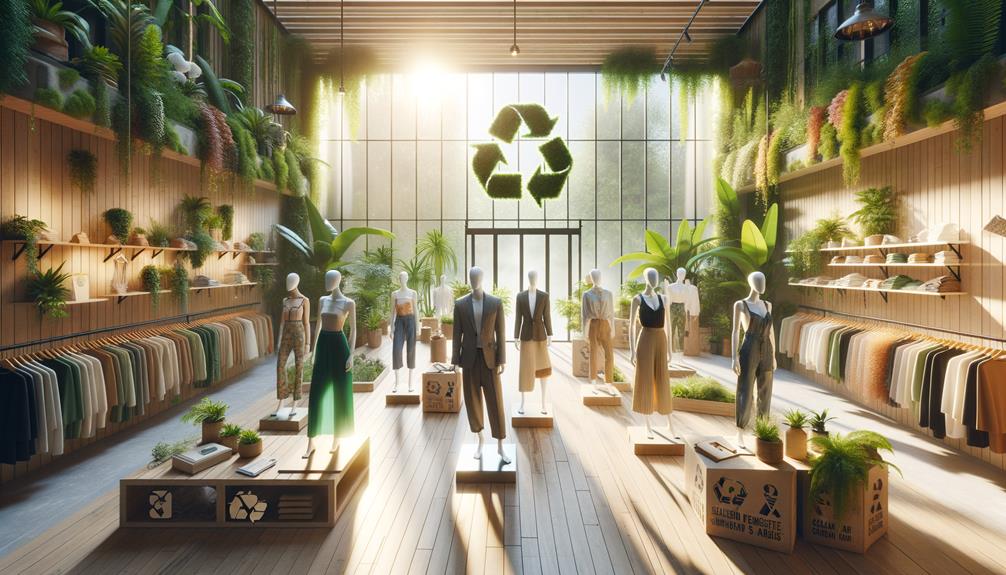Gender-neutral fashion isn't just a trend; it's shaping how we express ourselves. Clothes aren't inherently gendered – they're social constructs. Brands like TomboyX and IJJI focus on inclusivity and sustainability, challenging old norms. The pandemic's comfort-driven athleisure wave accelerated this shift in the industry. Masculine styles have long dominated, while femininity often gets overlooked. Recognizing feminine aesthetics as essential is crucial. By embracing gender-neutral fashion, we challenge societal constraints and foster equality. There's much to uncover about this evolving landscape and its broader implications.
Evolution of Gender-Neutral Fashion
Over time, gender-neutral fashion has become more mainstream, challenging traditional norms and allowing people to express themselves through clothing. The idea that clothing is inherently gendered is a social construct – for example, high heels were originally worn by men to signify upper-class status, which makes our current associations seem arbitrary.
Gender-neutral clothing is designed without specific color or texture associations, creating fluid, non-binary styles that fit a variety of body types. This approach allows for more personal expression and comfort. The rise of athleisure wear and the increased demand for comfortable clothing during the COVID-19 pandemic have accelerated this trend, as people seek garments that cater to their lifestyle rather than outdated norms.
Smaller, sustainable brands have been leading this movement, offering high-quality, ethically produced garments that prioritize function and self-expression over gender signifiers. As awareness of trans and non-binary identities grows, the future of fashion looks set to embrace even more inclusive and diverse options. Gender-fluid fashion isn't just a trend – it's a revolution in how we think about and express ourselves through clothing.
Key Brands Leading the Movement
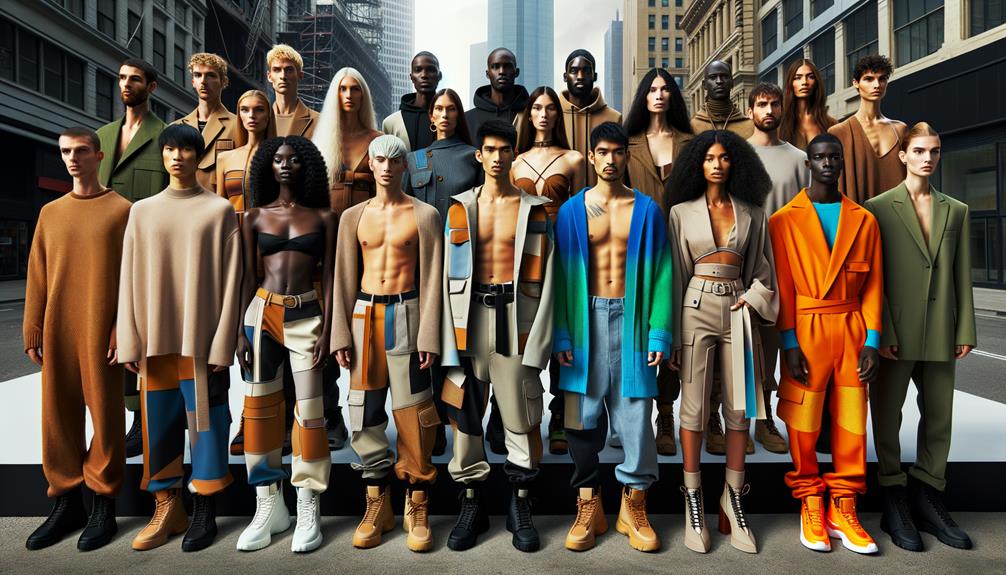
Often, the most forward-thinking brands in gender-neutral fashion push against traditional norms by prioritizing self-expression and sustainability. This shift isn't just about clothes; it's about embracing a broader spectrum of gender identity and creating a space where everyone feels represented.
A few key brands stand out in this domain:
- TomboyX: Founded by Fran and Naomi, TomboyX offers gender-inclusive undergarments that fit all shapes and sizes. They focus on sustainable production, ensuring their designs are both eco-friendly and inclusive.
- IJJI: Based in California, IJJI uses natural fibers and unique silhouettes to create clothing that encourages self-expression. Their local production model highlights a commitment to quality craftsmanship and sustainability.
- Official Rebrand: Founded by non-binary artist MI Leggett, this brand transforms unwanted materials into gender-free streetwear. Each piece is a one-of-a-kind garment, emphasizing artistic exploration and eco-consciousness.
These brands are redefining what fashion can be, proving that genderless clothing isn't just a trend, but a critical evolution in how humanity comprehends and expresses gender identity. Their commitment to sustainability and innovation resonates with many seeking change.
Societal Impact and Perceptions

When discussing fashion that challenges traditional gender roles, I see both progress and resistance. Fashion trends often reveal deep-seated societal biases that still favor masculine styles. It's intriguing how perceptions can slow down full acceptance of gender-neutral looks.
People have varying attitudes towards fashion that blurs gender lines. Some embrace the fluidity, while others cling to more conventional norms. This tension highlights the ongoing social negotiation around what is considered acceptable or desirable in terms of self-expression through clothing.
The fashion industry plays a role in perpetuating or challenging these norms. Its influence can either reinforce traditional gender associations or help normalize a wider range of sartorial choices. The pace of change often depends on how mainstream audiences respond to these fashion statements.
Ultimately, the societal impact of gender-bending fashion is complex. Progress is being made, but deeply rooted assumptions about gender and appearance can be hard to overcome. Continued dialogue and visibility of diverse fashion choices may be necessary to foster greater acceptance.
Breaking Gender Norms
In our society, straying from traditional gender roles often reveals deep-seated biases and discomfort surrounding femininity. I've noticed how gender-neutral styles frequently prioritize traditionally masculine elements over those from women's clothes. This suggests an implicit devaluation of femininity, perpetuating the notion that masculine traits are more desirable.
A few key observations stand out:
- Double Standards: Girls embracing traditionally 'girly' interests are often seen as less progressive, while boys exploring feminine aesthetics face societal humiliation.
- Parental Pushback: Parents offering a mix of 'masculine' and 'feminine' toys to daughters often encounter discomfort from others when their children prefer 'girly' items.
- Cultural Messaging: The focus on masculine elements in gender-neutral styles sends a message that femininity is less valuable.
These points illustrate how our cultural landscape struggles with genuine acceptance of feminine interests. This discomfort can foster misogyny, teaching children that femininity is something to be ashamed of. As we seek innovation in fashion, it's crucial to address these biases and create a space where all forms of gender expression are equally celebrated.
Shifting Fashion Trends
As gender-neutral fashion becomes more prevalent, it's fascinating to see how these evolving trends influence societal perceptions and challenge traditional norms. The growing popularity of gender-neutral clothing has sparked crucial conversations about gender equality and the rigid expectations that often dictate our choices.
I've noticed a celebration of girls embracing traditionally masculine activities, yet there's a persistent devaluation of feminine interests. It's troubling to see how 'girly' things are often shamed, as if putting down girls and women. This double standard isn't just about clothing; it's a reflection of deeper societal biases.
When parents provide a mix of 'masculine' and 'feminine' toys, they sometimes face backlash. The criticism seems rooted in the belief that feminine interests are inferior. This bias extends to fashion. Girls wearing 'boys' clothing are often accepted, but boys exploring feminine aesthetics face humiliation. This disparity not only cultivates early misogyny but also devalues femininity.
These shifting fashion trends are more than just about what we wear. They're a step towards dismantling outdated gender norms and fostering a more inclusive understanding of identity and expression. Gender-neutral fashion is a bold statement against societal constraints, pushing us towards true gender equality.
Breaking Down Gender Norms
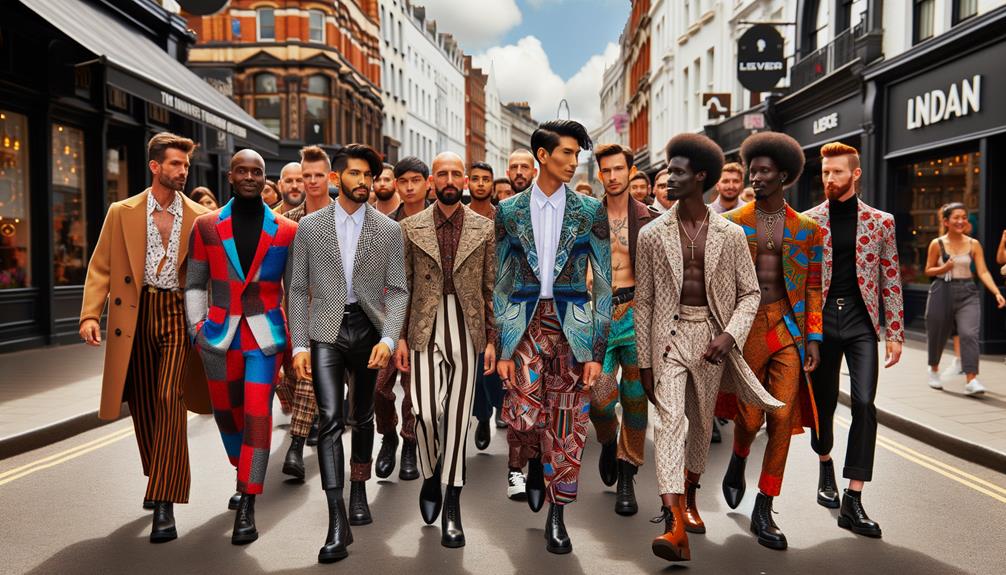
Clothing doesn't have to be boxed in by traditional gender categories anymore. Gender-neutral fashion is designed without the constraints of specific colors or textures, embracing a fluidity that goes beyond the masculine and feminine divide. This shift isn't just about how things look; it's about changing the norms that dictate how we present ourselves to the world.
Consider these examples:
- Men originally wore high heels to show their upper-class status.
- Pajama sales jumped by 143% during the pandemic, as people prioritized comfort over traditional gendered attire.
- Bra sales dropped by 13%, highlighting a move towards more comfortable and less gendered clothing options.
Genderless fashion prioritizes comfort, quality, and inclusivity. Smaller, sustainable brands are leading this charge with higher-quality, often pricier products that consumers are increasingly willing to invest in. These pieces are designed with functionality and simplicity, focusing on proportions that can fit a variety of body types.
Designing apparel beyond the binary isn't just a fad; it reflects a broader societal shift towards inclusivity and self-expression. We're seeing a reinvention of fashion that's innovative, liberated, and fundamentally human.
Challenges and Criticisms
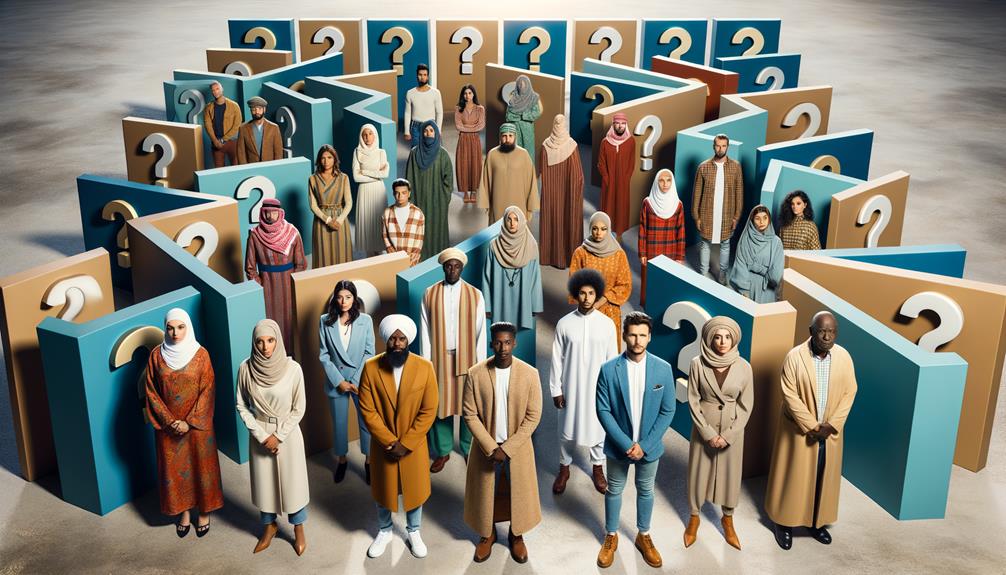
Gender-neutral fashion often faces challenges in gaining widespread acceptance, as it tends to lean towards traditionally masculine styles. This imbalance leaves 'feminine' aesthetics undervalued, making it difficult to embrace femininity in fashion. The reasons behind this struggle are complex and worth exploring.
The fashion industry has long been influenced by gender norms and stereotypes, which can make it challenging for gender-neutral styles to gain traction. Many consumers are accustomed to the binary division of 'men's' and 'women's' fashion, and breaking free from these expectations can be met with resistance.
Additionally, the perception that 'feminine' fashion is less valuable or desirable than 'masculine' styles persists in society. This bias can make it harder for gender-neutral designs that incorporate traditionally 'girly' elements to gain widespread acceptance.
To address these challenges, the fashion industry and consumers alike may need to re-evaluate their preconceptions about gender and aesthetics. Embracing a more inclusive and diverse range of fashion expressions, regardless of gender associations, could help create a more welcoming environment for gender-neutral styles to thrive.
Market Acceptance Hurdles
While the gender-neutral fashion movement aims to break down traditional gender barriers, it often falls short by favoring masculine styles. This oversight can inadvertently devalue femininity, reinforcing stereotypes rather than dismantling them.
Key market acceptance hurdles include:
- Parental Discomfort: Many parents feel uneasy when their daughters express a strong preference for traditionally feminine clothing, worrying it contradicts the principles of gender neutrality and feminism.
- Double Standards: There's an evident double standard where society is more accepting of girls wearing 'boy' clothes than boys exploring 'girl' styles. Boys donning feminine attire frequently face ridicule.
- Societal Attitudes: These attitudes often devalue femininity, implicitly suggesting that 'girly' elements are inferior. This can negatively impact how girls and women are viewed and respected.
To truly innovate, gender-neutral fashion must celebrate all expressions of gender, including femininity. Only then can it foster a more inclusive and respectful fashion landscape.
Stereotype Resistance Issues
Confronting the challenges of stereotypes in gender-neutral fashion reveals deep-seated biases that persist in our society. Despite the rise of gender-neutral clothing, the concept of gender remains deeply ingrained, often limiting true freedom of expression. Boys exploring feminine aesthetics face societal backlash, while girls adopting 'tomboy' styles are often praised. This double standard exposes a persistent devaluation of femininity.
Parents who encourage a blend of traditionally masculine and feminine toys for their daughters often face criticism if their child shows a strong preference for 'girly' interests. This societal pressure to conform underscores how deeply rooted these biases are. The prevalence of gender-neutral styles in nursery decor and baby clothing, often excluding traditionally feminine colors like pink and purple, further illustrates this bias. It raises questions about why femininity is frequently sidelined.
A viral video of a father chastising a childcare worker for allowing his son to wear a princess dress exemplifies the societal shaming and misogyny that boys can face. To truly move beyond these stereotypes, we must challenge our cultural attitudes towards femininity and embrace a more inclusive concept of gender.
Future of Unisex Clothing
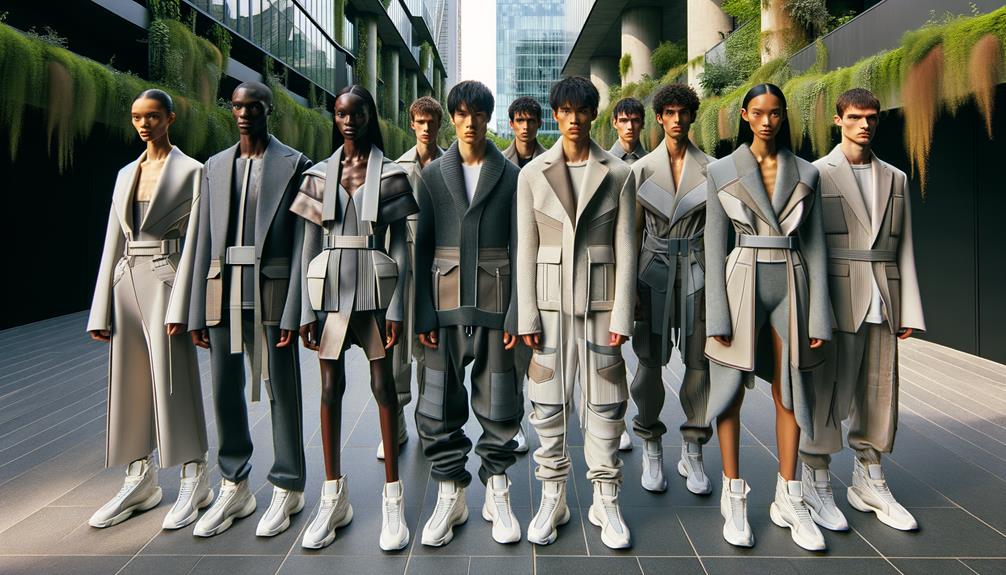
The future of unisex clothing hinges on challenging traditional gender norms while prioritizing comfort and sustainability. As I observe the evolving fashion landscape, it's clear that the focus is on creating pieces that can be worn by anyone, regardless of gender. Major brands have embraced this shift, but smaller, ethically-minded labels are truly innovating. They're using organic cotton and other sustainable materials to produce high-quality, long-lasting garments.
Consumers now prioritize comfort and individuality. They want clothes that fit well and feel good. The appeal of unisex clothing lies in its simplicity and versatility. It's about finding the perfect balance between form and function.
Three key trends shaping the future:
- Sustainability: Brands are increasingly using eco-friendly materials like organic cotton, catering to a growing eco-conscious consumer base.
- Inclusivity: Unisex designs are becoming more size-inclusive, accommodating a wider range of body types and shapes.
- Minimalism: Simple silhouettes and neutral colors dominate, making it easier for people to mix and match pieces.
The journey toward a more inclusive and sustainable fashion industry is just beginning, and unisex clothing is leading the way.
Frequently Asked Questions
What Is Gender Neutrality in Fashion?
Gender neutrality in fashion is about breaking free from traditional gender norms. It's about creating styles that anyone can wear, regardless of their gender identity. It's a move towards inclusivity, where people can express themselves authentically without being confined to outdated categories. This approach to fashion is versatile and minimalist, allowing everyone to showcase their true selves. It's a refreshing shift that's shaping the future of style.
What Is the Gender-Neutral Trend in Fashion?
According to the article, 56% of Generation Z shoppers prefer clothing that isn't tied to traditional gender norms. This shift in fashion preferences highlights a growing desire for individuality and a move away from rigid gender roles. The trend reflects a more inclusive and sustainable approach to the industry, challenging long-held assumptions about how we dress. As fashion evolves, it's allowing people to express their unique identities more freely, breaking down outdated social conventions.
What Is Gender-Neutral Fashion in 2024?
In 2024, fashion is breaking free from traditional gender boundaries. The focus is on comfort, sustainability, and inclusivity. Brands now cater to everyone, using recycled materials to create their designs. This innovative approach embraces diverse styles and creators, offering a liberating and empowering fashion landscape.
What Is Gender-Neutral Vs Androgynous Fashion?
Gender-neutral fashion focuses on simple, functional designs that work for everyone, while androgynous fashion blends masculine and feminine elements, challenging traditional norms. Both celebrate diverse identities, but approach style differently. Gender-neutral fashion aims to be inclusive, with a focus on practicality. Androgynous fashion, on the other hand, plays with gender expression, often mixing traditionally masculine and feminine aesthetics. Though the two have different approaches, they share a common goal of embracing a wide range of gender identities through clothing.
Conclusion
Gender-neutral fashion has grown from a niche to a mainstream trend. It's fascinating that over half of Gen Z shoppers have purchased unisex clothing. This shift reflects a broader desire to challenge rigid gender norms.
Certainly, challenges remain, but the future looks promising. More brands are embracing inclusivity, and societal perceptions are gradually changing. It's a small but meaningful step toward a more fluid understanding of identity.




